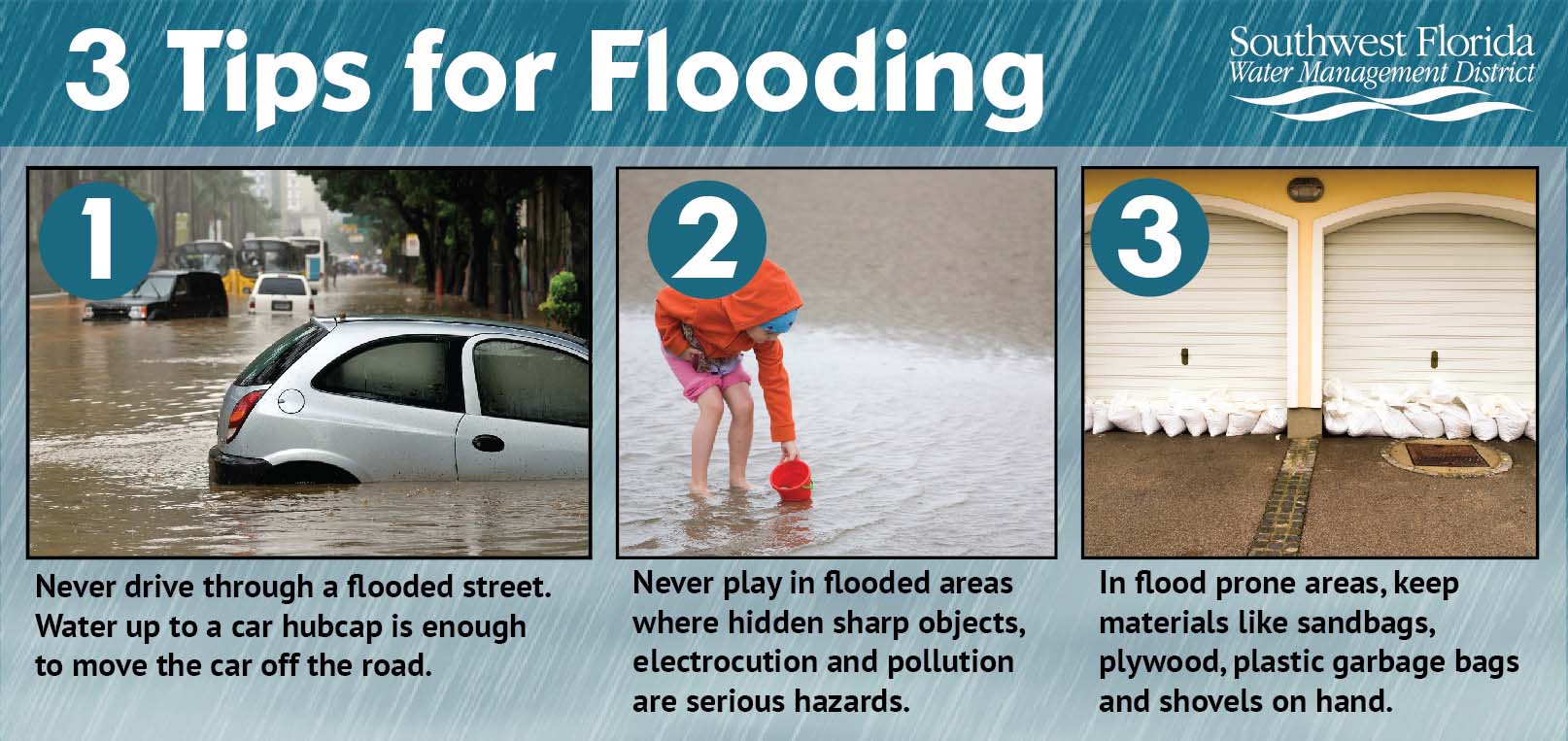
This is Severe Weather Awareness Week and while Florida residents are familiar with tropical storms and hurricanes, it doesn’t take a named storm to cause flooding.
Florida is vulnerable to flooding at any time of the year. Mostly surrounded by water, the abundant supply of moisture feeds the development of thunderstorms, which may produce heavy rains during a short period of time. When those heavy rains occur, the ground may not be able to absorb all of the rainwater and flooding may result. Due to the flat ground in portions of the state, floodwater may sometimes remain in an area for days, weeks or even months.
Not all floods are alike. Some floods develop slowly, taking anywhere from a few hours to a few days to have an impact. On the other hand, flash floods happen quickly, sometimes in a
matter of minutes.
Most flooding-related deaths in the United States are due to people driving their cars into flooded areas. Moving water only as deep as a car’s hubcaps can be enough to move the car off the road; and it may only take 12 to 16 inches of water to cause a car to float. Driving on flooded roads is also dangerous because the road may be washed out, or there are unseen
dangers in the water that could cause damage to your vehicle and threaten your life. When you encounter a flooded roadway, it is important to remember, “Turn around. Don’t drown!”
Florida has more than 2,200 miles of tidal shoreline. Because of this, many
areas of Florida are also prone to coastal flooding. This may come from storm surge associated with tropical storms or from other causes such as strong onshore winds or higher than normal tides due to lunar effects.
Meteorologists at the National Hurricane Center and local Florida National Weather Service offices watch thunderstorms and tropical systems closely to forecast how much rainfall it may produce and how much flooding may occur. The National Weather Service will issue coastal flood advisories, watches and warnings similar to inland flood statements. District staff closely monitor water bodies and adjust flood control structures when appropriate.
For more severe weather tips, visit FloridaDisaster.org
